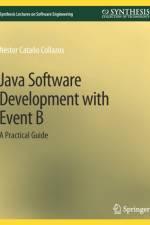von Marco Brambilla
58,00 €
This book discusses how model-based approaches can improve the daily practice of software professionals. This is known as Model-Driven Software Engineering (MDSE) or, simply, Model-Driven Engineering (MDE).MDSE practices have proved to increase efficiency and effectiveness in software development, as demonstrated by various quantitative and qualitative studies. MDSE adoption in the software industry is foreseen to grow exponentially in the near future, e.g., due to the convergence of software development and business analysis.The aim of this book is to provide you with an agile and flexible tool to introduce you to the MDSE world, thus allowing you to quickly understand its basic principles and techniques and to choose the right set of MDSE instruments for your needs so that you can start to benefit from MDSE right away.The book is organized into two main parts.The first part discusses the foundations of MDSE in terms of basic concepts (i.e., models and transformations), driving principles, application scenarios, and current standards, like the well-known MDA initiative proposed by OMG (Object Management Group) as well as the practices on how to integrate MDSE in existing development processes.The second part deals with the technical aspects of MDSE, spanning from the basics on when and how to build a domain-specific modeling language, to the description of Model-to-Text and Model-to-Model transformations, and the tools that support the management of MDSE projects.The second edition of the book features:a set of completely new topics, including: full example of the creation of a new modeling language (IFML), discussion of modeling issues and approaches in specific domains, like business process modeling, user interaction modeling, and enterprise architecturecomplete revision of examples, figures, and text, for improving readability, understandability, and coherencebetter formulation of definitions, dependencies between concepts and ideasaddition of a complete index of book contentIn addition to the contents of the book, more resources are provided on the book's website http://www.mdse-book.com, including the examples presented in the book.





